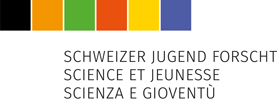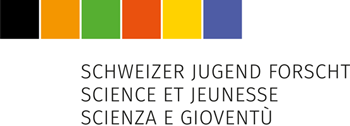Biologie | Umwelt
Noana Haschke, 2002 | Gipf-Oberfrick, AG
Climate change causes increasingly intense droughts. Therefore, optimal irrigation methods should be investigated. As most research focuses on the reproductive growth phase of plants, this project focuses on the vegetative growth phase with the research question: To what extent do drought periods at different times during the vegetative phase affect the growth of kidney bean (Phaseolus vulgaris) and marmande tomato (Solanum lycopersicum) plants?
Five groups with five replicates each were studied for both plant species. The changed variable was the timing of two week-long drought conditions. Drought and ideal conditions were defined by the Water Holding Capacity (WHC) of the soil.
In general, drought caused a reduction in growth. Except the early drought group, the middle, late and negative control groups of both plant species showed significant reductions in height compared to the respective control groups. The beans were affected more by the middle compared with the late drought period, which was reverse for tomatoes.
In conclusion, for ideal irrigation, plants should be watered during weeks of most intense growth and drought should be followed by ideal conditions to enable compensatory growth.
Fragestellung
Climate change with drought periods in previously non-arid regions is an increasing threat to agricultural production. Focusing irrigation on growth periods, where plants are most vulnerable to drought may allow to save water under drought conditions. Hence, this project focused on the extent of growth reduction due to differently timed drought periods during the vegetative phase of P. vulgaris and S. lycopersicum?
Methodik
After a germination phase with sufficient water supply, five different drought conditions with five biological replicates each were studied for both plant species. The control group received ideal water supply for the entire observation time of 28 days. The early drought group was put on drought conditions during days 1-14, the middle drought group during days 8-21, and the late drought group during days 15-28, and the negative control group during the entire experiment. Water supply was adjusted according to the water holding capacity (WHC) of the soil mixture. The range for ideal conditions was set to 60-80% WHC and the range for drought conditions to 20-40% WHC. The height of the plants was measured from the soil to the highest node every second day. At the end of the experiment, all the plants were taken out of the soil and dried in an oven to obtain the dry biomass.
Ergebnisse
The results showed that under ideal water supply, growth rates changed every week and were different for both plant species. The beans had the most intense growth in weeks 2 and 3 and the tomatoes in week 4. Constant drought reduced bean height gain by 62% and tomato height gain by 46%. The intensity of the effect differed between the groups. In contrast to the early drought group, the middle, late and negative control groups of both plant species showed significant reductions in height compared to the respective control groups. The beans were affected more by the middle compared with the late drought period, with a height difference of 4.2mm. This was reverse for the tomatoes, with a height difference of 9mm. The biomass production of the plants showed the same trend as their height growth.
Diskussion
Reduced plant growth during drought conditions has several reasons. Insufficient water supply in plants leads to a decrease in turgor pressure, which is needed for cell elongation, the maintenance of rigidity (important for optimal sunlight absorption) and the swelling of the stomata’s guard cells (enabling gas exchange). Also, plants need water to store energy in the process of photosynthesis. The early drought showed the smallest effect on the plants for the following reasons; the leaves were still small, the growth rates were low (also in the control group), there was no rapid drop in WHC causing soil clustering and an intense drought response and the plants could do compensatory growth in the two subsequent weeks with ideal conditions. Lastly, the plants were most affected by the drought during their most important weeks of growth, explaining the severe growth reductions observed for some groups.
Schlussfolgerungen
In summary, the results showed that sufficient water supply is most important in the weeks of most intense growth for both plant species. Ideally, phases with reduced water supply should be followed by sufficient water supply to allow compensatory growth.
Würdigung durch den Experten
Henning Mühlenbeck
Noana Haschke zeigt in ihrer Arbeit zum Effekt von Trockenstress während der vegetativen Wachstumsphase von Kulturpflanzen eine vorbildliche wissenschaftliche Vorgehensweise. Die Ergebnisse können die Grundlage für eine effektivere Bewässerung von Kulturpflanzen sein. Ihre ausführliche Diskussion der Ergebnisse offenbart ein tiefgehendes Verständnis für Pflanzenphysiologie. Noana’s in Englisch verfasste Arbeit ist auf einem sprachlich hohen Niveau. Die Erwähnung und Diskussion von Problematiken zeigen eine selbstkritische, reife Einstellung und ihre Begabung, wissenschaftlich zu arbeiten.
Prädikat:
hervorragend
Sonderpreis Weizmann Institut – International Summer Science Institute (ISSI)
Gymnasium am Münsterplatz, Basel
Lehrer: Dr Gérard Batts



